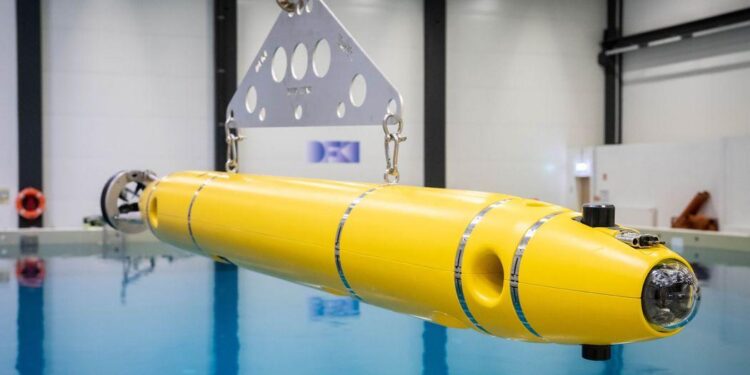Opportunities and Challenges for Monitoring Terrestrial Biodiversity in the Robotics Age
As the world grapples with the escalating impacts of climate change and habitat loss, the need for effective biodiversity monitoring has never been more urgent. Enter the robotics age, a transformative era that promises to revolutionize the way we observe and protect terrestrial ecosystems. From drones surveying vast landscapes to autonomous robots equipped with advanced sensors, technology is opening unprecedented opportunities for scientists and conservationists alike. However, alongside these advancements come significant challenges, including ethical concerns, data management complexities, and the potential for technological dependency. This article delves into the dual-edged sword of robotic innovation in biodiversity monitoring, exploring how these technologies are reshaping our understanding of nature while also highlighting the pitfalls that must be navigated to ensure the sustainable stewardship of our planet’s rich diversity.
Innovative Technologies Revolutionizing Biodiversity Monitoring Strategies
As we find ourselves at the intersection of technology and nature, a variety of innovative tools are emerging to enhance biodiversity monitoring. A key player in this transformation is drone technology, which allows for high-resolution aerial surveys of ecosystems that were previously difficult to assess. By employing remote sensing, ecologists can now gather data on tree density, vegetation health, and wildlife movement patterns without the need for extensive ground-based surveys. Additional advancements include acoustic monitoring systems which utilize sound recordings to identify and track animal populations, providing insights into species diversity that traditional methods may overlook. These technologies not only improve data accuracy but also significantly reduce the time and resources required for biodiversity assessments.
However, the integration of these technologies is not without its challenges. Issues surrounding data management and analysis arise as the volume of information collected increases exponentially. Researchers must develop robust frameworks to process and interpret data effectively, ensuring that it translates into actionable conservation strategies. Furthermore, ethical considerations come into play, particularly regarding the impact of unmanned aerial vehicles (UAVs) on wildlife behavior. The reliance on technology also raises questions about accessibility, as many conservation programs may struggle to afford these sophisticated tools, limiting their applications in less-developed areas. Addressing these challenges will be crucial for harnessing the full potential of technological innovations in protecting and understanding our planet’s diverse ecosystems.
Addressing Ethical Concerns in the Use of Robotics for Ecological Surveillance
The deployment of robotics in ecological surveillance brings with it a multitude of ethical considerations that must be addressed to ensure a responsible integration into environmental monitoring. As these technologies become increasingly autonomous, questions regarding data privacy, consent, and the potential for unintended consequences arise. Stakeholders must assess how the data collected by robotic systems may impact local ecosystems and the communities that depend on them. Moreover, there is a risk of ecological disturbances caused by the very presence of robots, prompting a need for frameworks that govern their use in sensitive habitats.
A collaborative approach involving scientists, policy-makers, and local communities is essential to navigate these complexities. Establishing guidelines and protocols can help mitigate risks and enhance public trust. Important considerations include:
- Ensuring transparency in data collection methods
- Implementing mechanisms for public consultation
- Fostering interdisciplinary collaborations to address ecological and ethical implications
Moreover, creating a curriculum around ethical frameworks in robotics could prepare future generations of conservationists and technologists to make informed decisions regarding the use of these powerful tools.
Building Collaborative Frameworks for Effective Data Sharing and Analysis
In the rapidly evolving realm of technology, the integration of innovative robotics with biodiversity monitoring presents a unique opportunity for researchers to enhance data sharing and analysis. By establishing collaborative frameworks, stakeholders—including conservationists, scientists, and tech developers—can create standardized protocols that streamline data collection and interpretation. These frameworks can foster a more inclusive approach to biodiversity research, allowing for shared access to vital datasets across different ecological regions and research initiatives.
However, this shift towards collaboration does not come without its challenges. Questions surrounding data ownership, ethical considerations, and privacy must be addressed to create a transparent and accountable system. Furthermore, technical barriers such as the need for interoperable systems and substantial investment in infrastructure must be considered. Successful data sharing and analysis hinge on the collective willingness of partners to navigate these complexities to develop a robust ecosystem that ensures the longevity of biodiversity monitoring efforts.
In Summary
As we stand on the cusp of a technological revolution, the intersection of robotics and biodiversity monitoring presents both remarkable opportunities and significant challenges. The advent of advanced drones, autonomous vehicles, and sophisticated sensors has the potential to revolutionize our understanding of terrestrial ecosystems, making it easier to collect data at unprecedented scales and frequencies. However, with these advancements come concerns about data accuracy, ethical considerations, and the financial implications of deploying such technologies in remote or sensitive areas.
As researchers, conservationists, and innovators come together to tackle these issues, it is essential that we navigate this new age carefully and collaboratively. Fostering partnerships between technologists and ecologists will be crucial in designing solutions that not only enhance our monitoring capabilities but also protect the very habitats we seek to study.
Moving forward, the challenge will lie in harnessing the power of robotics while remaining anchored to the core principles of sustainability and respect for nature. With commitment and ingenuity, we can turn the promise of robotics into a powerful ally in the quest to safeguard our planet’s biodiversity for generations to come. As we embrace this new frontier, the future of conservation is not just about technology; it’s about creating a more harmonious relationship between humanity and the natural world.































